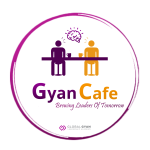“Why Should I Care?” A Gentle Reminder Every Manager Needs


In every meeting room, during every presentation or proposal, there is one question sitting quietly in the minds of listeners. It is not hostile. It is not cynical. But it is persistent.
That question is, “Why should I care?”
It is a question that rarely gets voiced aloud. Yet, it silently decides the fate of ideas. It determines which plans are heard and which are forgotten. It shapes whether people listen with interest or politely wait for the conversation to move on.
As managers, we often prepare slides, polish our data, and rehearse our recommendations. We feel confident in our ideas and expect others to be equally enthusiastic. But if we do not answer this one question early on, the rest of our message struggles to land.
This article is a reflection on that simple but powerful question, and how a humble tool called the SCQA framework can help us become better communicators, more thoughtful leaders, and more persuasive professionals.
The Common Misstep We All Make
Let’s start with a scene that might feel familiar.
A team lead is presenting a new system for customer follow-ups. The slides are clear. The benefits are listed. The logic is sound. The tool integrates with existing software, promises better conversions, and even has case studies from well-known companies. The presenter speaks with confidence and clarity.
And yet, the room stays quiet.
There are no objections, but there are no questions either. People thank the presenter and move on to the next topic. The proposal quietly loses momentum. It gets shelved.
What happened?
It is not that the idea was bad. It is just that the audience never truly connected with it. They were not shown why it mattered. They were not taken on a journey from context to conclusion. The presenter started with the solution before the audience had a reason to care.
This is something many of us have done, often without realizing it. We skip the context because we assume others already understand it. We forget to frame the problem because we are eager to present the fix. And in doing so, we leave people behind.
Context Comes Before Content
When we speak, people are not only listening to what we say. They are also evaluating whether it matters to them. They are asking:
- What is going on here?
- Is this relevant to me?
- Why is this a problem?
- What happens if we do nothing?
Unless we answer these questions early, our content, however brilliant, might not be received with the attention it deserves. Without context, even the most useful ideas can feel like noise.
This is where the SCQA framework becomes incredibly helpful. It is not a script. It is not a set of fancy words. It is a way of thinking that helps us guide our audience with care and clarity.

The SCQA Framework: A Simple Structure with Deep Impact
SCQA stands for Situation, Complication, Question, and Answer. It gives your message a flow that feels natural to listeners. Instead of starting with your recommendation, it begins with what the audience already knows, and slowly leads them to what they need to consider.
Let’s break it down gently.
Situation
Begin with the present. Describe the current environment. What is happening today? Stick to facts, avoid judgment, and keep it familiar. This helps your audience feel grounded.
For example: “Currently, our sales team uses spreadsheets to track follow-ups with leads.”
Complication
Now introduce the issue or challenge that is disrupting the status quo. This could be a new development, a risk, or a growing pain point. The goal here is to create shared concern or curiosity.
For example: “In the last quarter, we saw a 15 percent drop in conversions. After reviewing the data, we found that a large number of follow-ups were either missed or delayed.”
Question
Next, frame the key question that needs to be answered. This is what sets the direction for your proposal.
For example: “So the question is, how can we improve our follow-up consistency and reduce lost opportunities?”
Answer
Finally, share your proposed solution. By this point, the audience already understands why it matters. Your recommendation is no longer an isolated idea. It is a response to a real and visible problem.
For example: “One possible step forward is adopting a CRM system that sends automatic reminders and tracks lead activity in real time. This can help reduce errors and improve responsiveness.”
This approach is not about using fancy terms. It is about respecting how people think. You walk with your audience from what is known to what is new. And in doing so, you build trust.
Why This Approach Matters
We live in a world full of information. People are constantly processing emails, messages, dashboards, and meetings. Attention is limited. Decisions are delayed not because ideas lack merit, but because their importance was not made obvious.
When we structure our communication with care, we make it easier for others to follow. We help them understand not just what we are saying, but why it matters to them, right now.
This is especially important for managers and leaders. At senior levels, many ideas compete for the same resources. The ability to show relevance early becomes a key leadership skill.
SCQA in Everyday Situations
You do not need a stage or a boardroom to apply SCQA. It can help you in everyday conversations too.
- Strategy meetings: Frame the challenge before pitching the path forward.
- Team reviews: Explain performance gaps before suggesting changes.
- Client updates: Set context before sharing insights or recommendations.
- Career conversations: Share observations before offering guidance or feedback.
Whenever you are trying to align people, influence thinking, or inspire action, SCQA can be your quiet ally.
A Gentle Shift with Powerful Results
Many people worry that structuring their communication will make them sound robotic. In truth, it often has the opposite effect. It makes your message more human. You begin by acknowledging the shared reality, then invite people to explore a problem with you, and finally offer a way forward. It is a journey of shared understanding.
It is also not about using more words. In fact, this method helps you say less, but with greater clarity. It reduces the need for repetition, because people understand you the first time.
Before Your Next Meeting, Ask Yourself
Here’s a small checklist you can use as a gentle reminder:
- Have I clearly described the current situation?
- Have I introduced the challenge or change that makes this worth discussing?
- Have I framed the central question we need to solve?
- Have I shared the answer with clarity, care, and relevance?
If your message includes all four, you are not just speaking. You are connecting. You are not just informing. You are influencing.
And that is where real leadership begins.
The question “Why should I care?” is not a challenge. It is an invitation. It asks us to slow down, step back, and build a bridge of understanding before crossing into solutions.
In a world that rewards speed, taking a moment to provide context may feel like a delay. But it is not. It is an investment in clarity, in trust, and in thoughtful communication.
Every idea deserves to be heard. And every listener deserves to understand why it matters.
So the next time you share a plan, proposal, or presentation, begin with kindness. Guide your audience gently from the current situation, through the complication, into the core question, and finally to your answer.
You may find that once people truly care, they are much more ready to act.






Responses